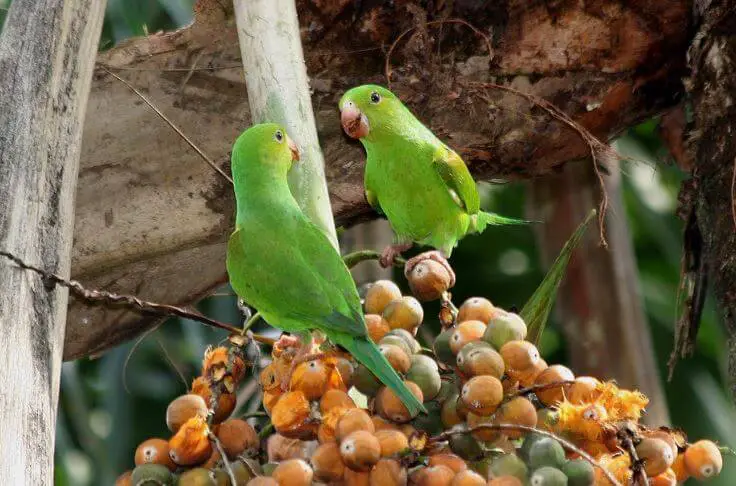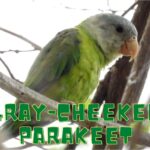 The Plain Parakeet is endemic to the Atlantic Forest biome of eastern Brazil, where it is a generally common resident in lowlands and foothills, to at least 1200 m, and is found from Alagoas south to Santa Catarina, and ranges inland as far as Goiás.
The Plain Parakeet is endemic to the Atlantic Forest biome of eastern Brazil, where it is a generally common resident in lowlands and foothills, to at least 1200 m, and is found from Alagoas south to Santa Catarina, and ranges inland as far as Goiás.
It inhabits forests, second growth, semi-open areas, and cities, provided there are some trees. Just as its name suggests, this is a plain green-colored parakeet,
although some blue is visible at the wing bend at rest and some bronzy coloration over the shoulder.
It feeds on fruit, seeds, and flowers, and perhaps also insects and their larvae, but given the Plain Parakeet’s general abundance—the species is common in many cities,
including the huge metropolises of Rio de Janeiro and São Paulo—it is perhaps surprising how little is known concerning this bird’s general biology.
Plain Parakeet 23 cm; 63 g. Green, slightly more yellowish on undersides; minor bluish tinge on nape; shoulder bronze-green, flight-feathers, and underside of tail bluish green.
Blue mutation on São Paulo coast. Immature has less blue in wings and shorter tails.

Plain Parakeet
Systematics History
Monotypic.
Subspecies
Monotypic.
Distribution
CE Brazil from Alagoas S to Santa Catarina; an isolated population recently found in the Rio Grande do Sul.
Habitat
Canopy and edge of lowland and montane rain forest, secondary growth, semi-open cultivated land with scattered groves, plantations, and city parks, generally in lowlands but ranging up to 1200 m.
Movement
Shifts in numbers occur, reflecting local seasonal movements.

Plain Parakeet
Diet and Foraging
Pulp of Posoqueria latifolia, seeds of Ficus glabra, Trema micrantha, Xylopia brasiliensis, Vriesea, Rhipsalis, Cecropia gladioli, Hieronyma alchorneoides, Merostachis, seeds and flowers of Tibouchina mutabilis and the mistletoe Psittacanthus, flowers of Norantea brasiliensis and Eucalyptus, nectar of Pseudobombax, possibly insects and their larvae.

Plain Parakeet
There are also photographs or videos of birds feeding on fruits or flowers of Ceiba speciosa, Erythrina mulungu, Schefflera sp., Euterpe edulis, and Livistona Chinensis, as well as in feeding stations.
Sounds and Vocal Behavior
Commonest vocalizations include a rather high-pitched shrill “cree” or bisyllabic “cra-creep”, and a lower-pitched, harsh-sounding “cra-cra-cra”, given both in flight and perched.
Noisy in flight, individuals of a group often call simultaneously. Large groups can make a loud cacophonous noise.
Breeding
Probably Sept-Dec, the usual breeding season in SE Brazil, with records of the nest in Sept and young in Jan. Nest in hollow in a tree. In captivity: four eggs; incubation, only by female, lasted c. 26 days; young fledged at seven weeks.
Plain Parakeet As Pets
SOURCE: edu8029
Plain Parakeet Lifespan
In captivity, Plain Parakeets can live up to 20 years, but in the wild, their lifespan is shorter. This is mainly due to predators, irregular feeding, and exposure.
Conservation Status
Not globally threatened. CITES II. Common in many parts of its range, and probably now stable after centuries of slow decline as agriculture cleared out trees in many areas.
Tolerates changes far more than any other parrot endemic to SE Brazil, as confirmed by its presence in heart of São Paulo. Present in many protected areas including Itatiaia National Park. Rare in captivity, and export banned from Brazil.
Plain Parakeet – Toui tirica – Brazil
SOURCE: Didbird




















